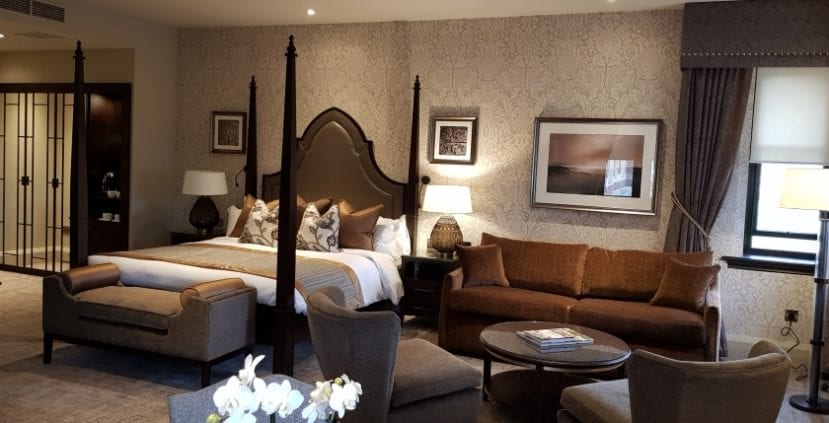
To have designed 22 churches, three cathedrals, three convents and a plethora of other buildings by the time you are 30, you must be a man on a mission. Remember, back in the 19th Century, that would all have been achieved without software, photocopiers or Starbucks’ triple espressos. Today, such productivity would earn big bucks bonuses.
Augustus Welby Northmore Pugin’s ambitions were as spiritually elevated as his name. Whilst Charles Dickens decried the grim, soulless squalor of Industrial Revolution Britain, Pugin got on with building a new Jerusalem from red bricks and exquisite stone masonry: romantically believing that a revival of Gothic architecture would improve the morals of the nation.

So a Pugin is our hero, but not Augustus. He died aged 40. He had departed long before the project to transform Stanbrook from 17th Century manor house to 19th century Abbey, for up to 188 Benedictine nuns, had even begun.
Yet, a Gothic architecture gene for designing numerous pointed arches, serene cloisters, elaborate stained glass windows and high vaulted ceilings was passed down to his sons.
Clearly, long hours and stress are not the preserve of the 21st Century. Edward Pugin worked feverishly on Stanbrook Abbey. He died in 1875 from overwork and “injudicious use of chloral hydrate”, aka knock-out drops. It was left to brother Peter Paul Pugin to complete the masterpiece.
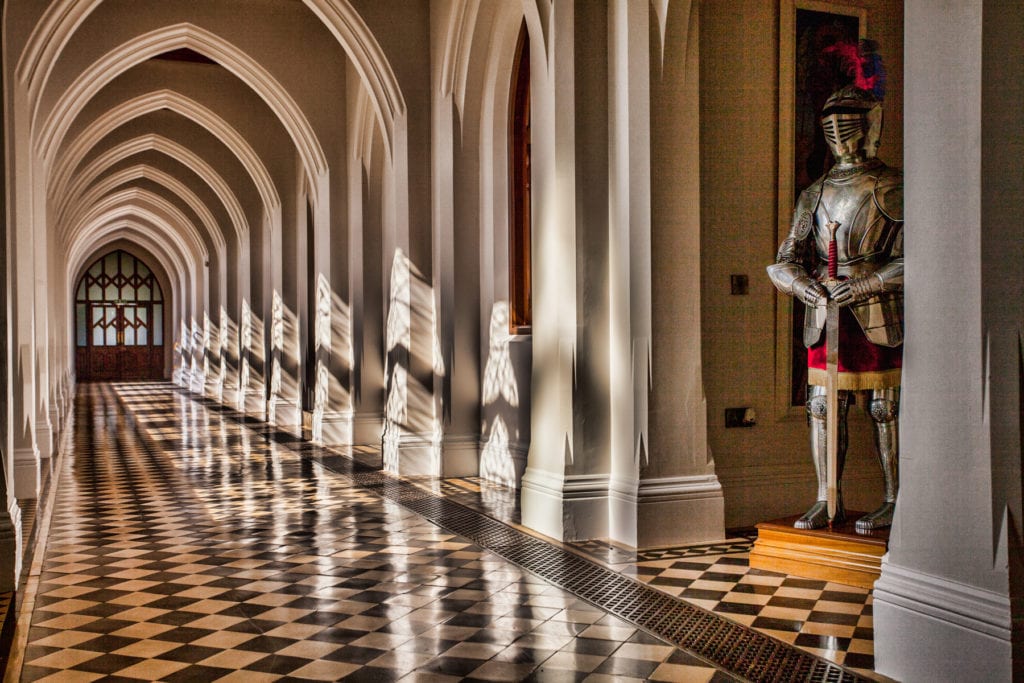
So how, back in 2009 after the nuns had departed for North Yorkshire, do you turn an Abbey into a luxury hotel? First, you ask the Pope to deconsecrate the site. Then, in 2015, you add a controversial contemporary New Classicism extension of towering pillars and huge glass windows to soften the austere lines of the original Abbey. Add in the sophisticated George’s Bar too.
The recent £4.2m refurbishment programme, recently completed after Hand Picked Hotels’ acquisition of the Stanbrook Abbey Hotel in 2017, celebrates the architects and craftsmen who have contributed to this spectacular Grade 2 Listed building with feature rooms on the second floor.
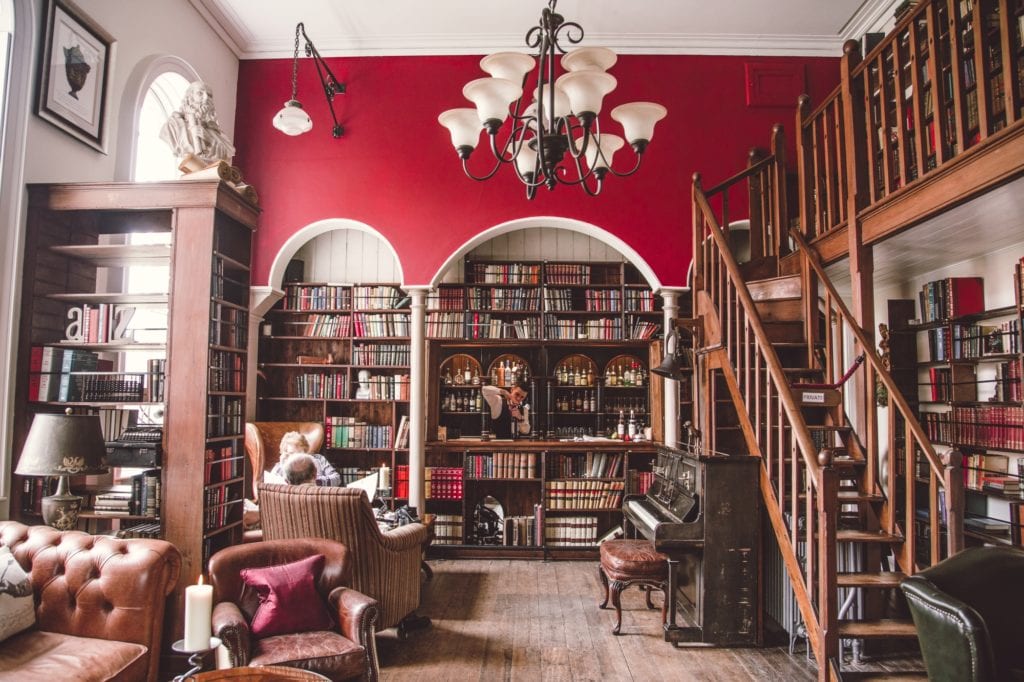
The Ashlin, Boulton and Thompson rooms were once part of the calefactory, the warming room, the only heated room, where nuns gathered in cold weather. Quite rightly there’s a Pugin Suite too. While the Thompson room pays tribute to carpenter Robert (Mouseman) Thompson who carved mice into the wood wherever he worked.
Gone are the silent, simple and stark dorms of yesteryear, with nuns living out their vows of chastity, obedience and poverty: they are replaced by elegant rooms with gentle fawn tones and a subtle ecclesiastically themed floral wallpaper.

Clusters of black-and-white prints highlight the craftsmanship of the estate, featuring ornate stonework, intricate stone-glass windows, evocative views of the cloisters – reminders of a quieter more thoughtful time when people found peace in prayer and their surroundings rather than their headphones and Mindfulness App.
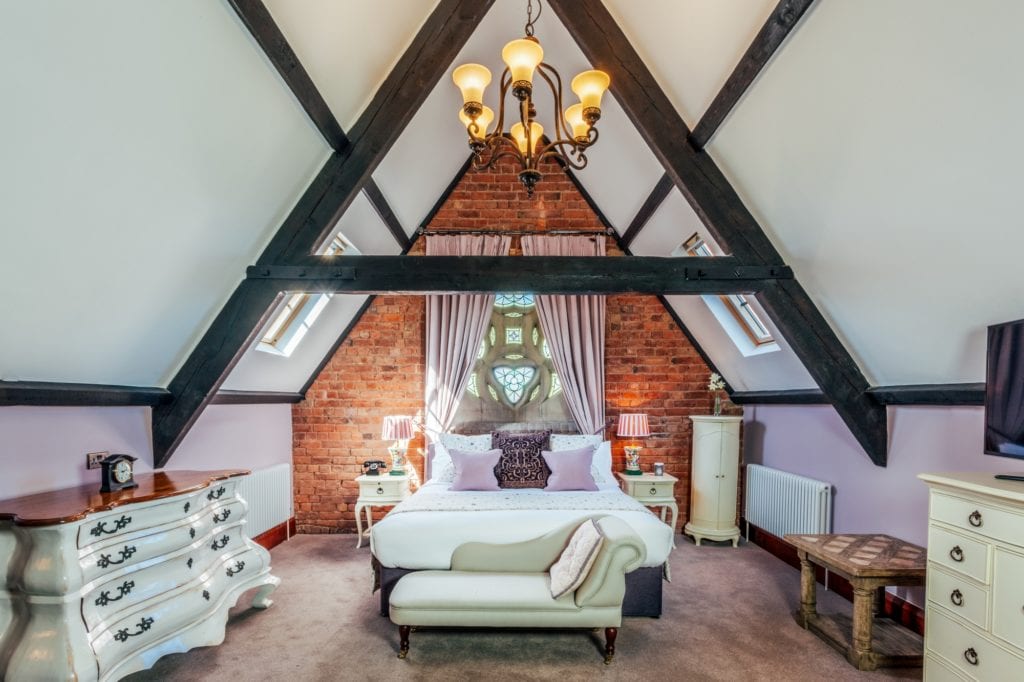
Like a bishop’s robes, the bed throw brings a splash of colour to rooms of calming, warming neutral colours. Nor was there Wi-fi and widescreen televisions when the nuns were in residence. Seamlessly Stanbrook Abbey merges past and present, historic and contemporary.
Boost your Fitbit daily score with steep spiralling steps to the top of the 100 feet Bell Tower for views towards the Malvern Hills. Alternatively, or additionally, take the Abbey Trail through the Lavender Garden and past a tranquil willow-draped lake.
Although the refectory is still called The Refectory – and a carved oak pulpit remains from the biblical meal-time readings – it is now a sophisticated fine-dining restaurant. David Humphreys, Head Chef, creates in keeping with the age-old principles of local and seasonal sourcing to produce Modern British Cuisine.

Pears, symbolically featured on the Worcestershire flag, epitomise Humphrey’s local approach. Pickled pear is a smooth addition to whipped light goat cheese. Similarly, local rhubarb works well accompanying a starter of wood pigeon before it returns for a curtain call with the dessert of Apple and Rhubarb. Alongside the caramelised apple there’s poached rhubarb as well as a gin and rhubarb sorbet.

It’s doubtful that either lemon sole, Chateaubriand or a vegetarian option of Abbey gnocchi would have been part of the nuns’ daily fare but they may have been familiar with corn-fed chicken, duck, lamb and the occasional fillet of salmon.
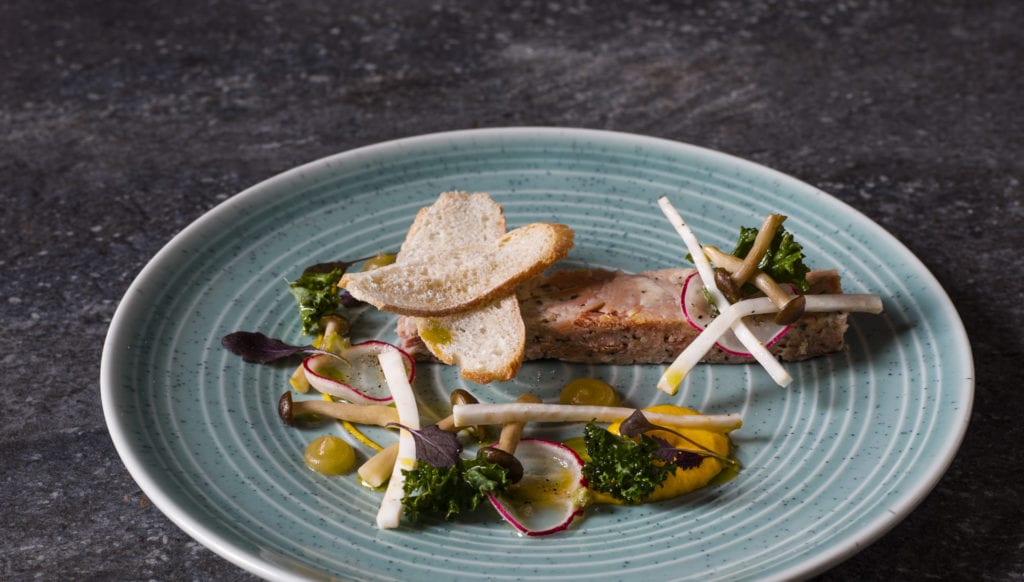
If the menu is quintessentially British, then so was the tradition of the Victorian Gothic revival. Stanbrook Abbey Hotel is a living, thriving tribute to the artists, designers and skilled artisans who combined to make a stand against the dark, disturbing and drab world of the Industrial Revolution. Today, the stunning refurbishment of Stanbrook Abbey Hotel by Hand Picked Hotels is another pledge to preserve great British traditions. Even the toast racks are inspired by pointed Gothic arches.
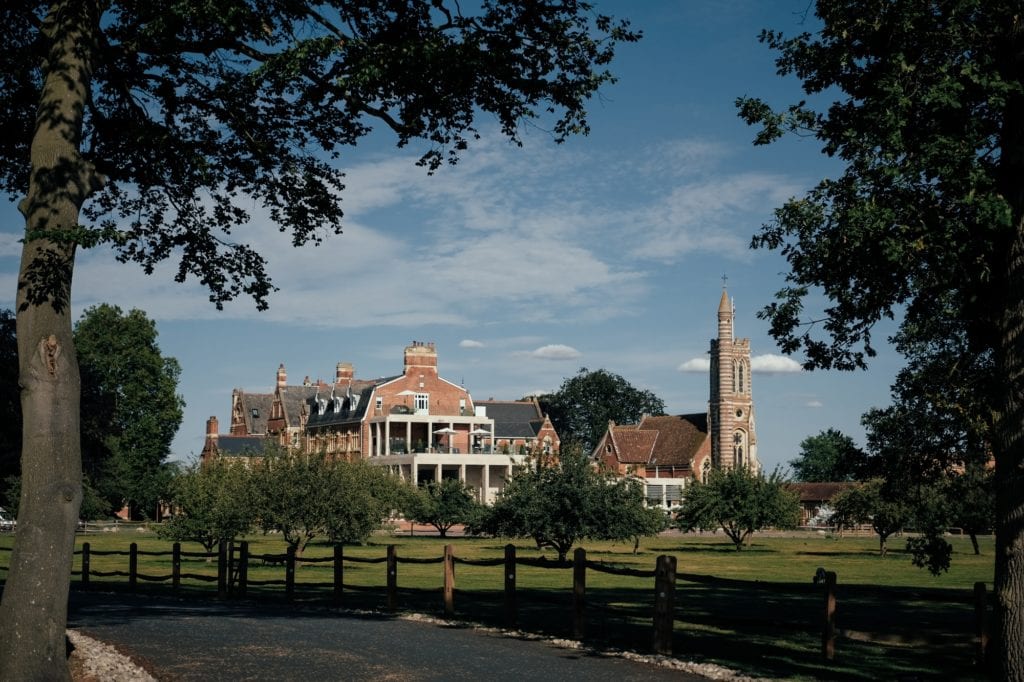
The Stanbrook Abbey Hotel is truly a special gem created by an architecture virtuoso and repurposed into a lovely hotel and respite. For the traveler in search of the quintessential countryside getaway, look no further than the Stanbrook Abbey Hotel.
